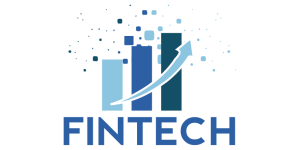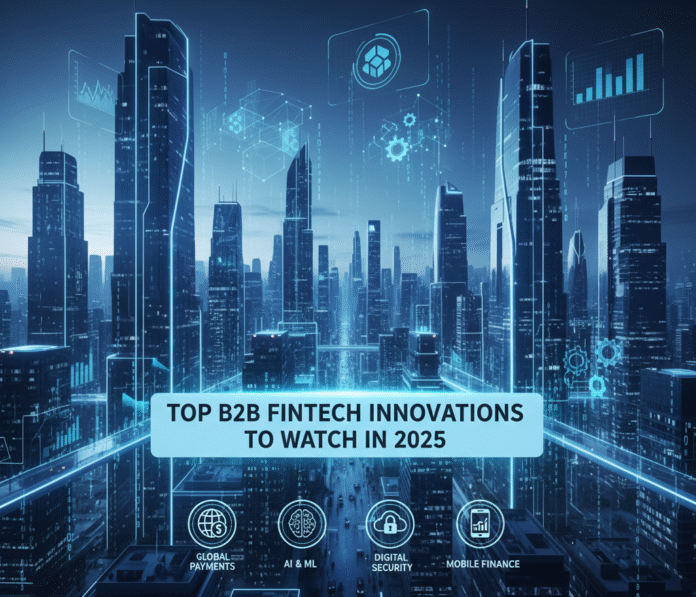In 2025, the B2B fintech landscape is no longer just about transactions—it’s about intelligence, automation, and strategic growth. Businesses adopting B2B fintech innovations are not just keeping up; they’re staying ahead by predicting client needs, optimizing workflows, and gaining measurable competitive advantages.From AI to blockchain, these tools are changing the way businesses work.
For B2B marketers, understanding and applying these innovations isn’t optional—it’s essential. The right fintech tools can redefine marketing strategies, unlock new revenue channels, and deliver seamless customer experiences. This article explores the top B2B fintech innovations to watch in 2025 and how marketers can use them to make smarter decisions, boost engagement, and achieve real business impact.
1. AI-Powered Financial Platforms
Artificial intelligence is transforming B2B fintech, enabling businesses to make informed, data-backed decisions. AI-driven platforms analyze client behavior, streamline operations, and help marketers focus on high-impact actions.
Marketers can leverage AI to:
- Predict client buying patterns and identify high-value leads
- Automate financial reporting and generate dynamic dashboards
- Detect unusual or suspicious activities instantly
- Provide quick, automated support using AI chatbots
By embedding AI insights into marketing strategies, companies can personalize communication, enhance engagement, and achieve stronger business outcomes.
2. How Blockchain Strengthens B2B Financial Integrity
Blockchain technology has evolved far beyond cryptocurrencies—it’s now the foundation of secure, transparent B2B operations. Its decentralized structure builds trust, minimizes reconciliation time, and ensures reliability in every transaction.
Marketers can utilize blockchain for:
- Smart contracts that automatically apply agreed terms between parties
- Secure and verified cross-border transactions
- Permanent and transparent records that simplify compliance checks
With blockchain, marketers can strengthen client confidence, increase transparency, and simplify complex B2B transactions.
3. Embedded Finance for Seamless Client Experiences
Embedded finance integrates financial services like payments, lending, and insurance directly into existing business platforms. Clients can transact without leaving the platform, improving satisfaction and reducing friction.
Companies benefit by:
- Simplifying onboarding through in-platform payments and billing
- Creating faster and smoother financial processes for customers
- Recognizing areas where clients may benefit from more tailored offerings
By embedding finance tools into business platforms, marketers can create a seamless client experience and stand out in a crowded market.
4. Generative AI for Marketing Automation
Generative AI is revolutionizing how B2B marketers create, manage, and scale campaigns. It automates time-consuming tasks while enabling personalization and smarter targeting.
Marketers can use generative AI to:
- Craft personalized emails and newsletters for specific client segments
- Generate insightful reports and analytics automatically
- Simulate campaign results to test strategies before launch
This innovation helps marketing teams focus on creativity and strategy while maintaining accuracy and speed, leading to better engagement and results.
5. Predictive Analytics for Strategic Marketing
Predictive analytics empowers marketers to shift from reactive strategies to proactive, data-driven marketing. By forecasting trends and client behavior, businesses can act ahead of the competition.
With predictive analytics, marketers can:
- Identify top-performing leads using predictive scoring
- Anticipate buying cycles for better campaign timing
- Optimize budget allocation to boost overall ROI
These insights help teams refine campaigns, drive sustainable growth, and strengthen their competitive position in the B2B fintech innovations landscape.
6. Simplifying International Payments in B2B Fintech
Fintech is transforming international B2B payments, making global transactions faster, simpler, and more cost-effective. Real-time payments and digital wallets are replacing outdated systems, improving operational speed and client satisfaction.
With these innovations, companies can:
- Offer instant and transparent international payments
- Simplify the process of sending and receiving money across borders
- Expand confidently into new global markets
By improving payment efficiency, marketers and businesses can scale internationally with less complexity and higher reliability.
7. RegTech for Compliance and Risk Management
RegTech, or regulatory technology, uses automation and AI to simplify compliance in complex B2B operations. It ensures adherence to changing regulations without slowing business processes.
Marketers can use RegTech to:
- Stay updated on evolving regulations automatically
- Assess risks and automate compliance reporting
- Maintain regulatory consistency across all marketing interactions
By implementing RegTech, businesses enhance transparency, build trust, and avoid compliance pitfalls that can impact reputation and growth.
8. AI-Driven Lending Platforms for Modern Businesses
Digital lending platforms are redefining how businesses access credit. They use automation and AI to assess creditworthiness, approve loans faster, and improve financial flexibility.
Marketers and organizations can benefit by:
- Providing clients with quick and flexible loan options
- Seamlessly integrating lending services into their platforms
- Identifying opportunities to promote related financial products
These platforms help businesses increase customer trust, support growth, and maintain a strong competitive edge in the B2B fintech innovations ecosystem.
9. API-Driven Fintech Ecosystems
APIs (Application Programming Interfaces) are the glue connecting fintech tools, CRMs, and business systems. They create seamless data flow and enable more efficient marketing automation.
Advantages of API ecosystems include:
- Integrating ERP, CRM, and fintech systems for real-time insights
- Generating accurate, unified data for marketing decisions
- Powering hyper-targeted campaigns with live data
APIs enable marketers to operate smarter and faster, providing consistency and better customer experiences.
Conclusion
The B2B fintech innovations shaping 2025 are revolutionizing how businesses interact with clients, manage operations, and drive measurable growth. From AI-powered analytics and blockchain to embedded finance, predictive insights, and digital lending, these technologies are transforming marketing and financial strategies alike. Companies that leverage these advancements can enhance lead targeting, optimize campaigns through data-driven insights, and maintain regulatory compliance while expanding globally with faster, more secure financial processes. Marketers who embrace these B2B fintech innovations early will not only gain a competitive edge but also strengthen client relationships and achieve sustained business growth in the evolving digital-first economy.
I hope you find the above content helpful. For more such informative content, please visit Fintech Maestro.
FAQs
Q1: What are B2B fintech innovations?
B2B fintech innovations are technological advancements in the financial sector designed to improve business operations, marketing effectiveness, and client engagement.
Q2: How can AI improve B2B marketing in fintech?
AI delivers predictive insights, automates processes, and personalizes campaigns, helping marketers focus on high-value clients and increase ROI.
Q3: Why is blockchain important for B2B businesses?
Blockchain ensures secure, transparent transactions, reduces disputes, and builds trust among enterprise clients.
Q4: What role does embedded finance play in B2B marketing?
Embedded finance integrates payments, lending, and other financial services into platforms, enhancing client experiences and improving retention.
Q5: How do predictive analytics benefit B2B marketers?
Predictive analytics anticipates client behavior and market trends, allowing marketers to optimize campaigns and make proactive decisions.











